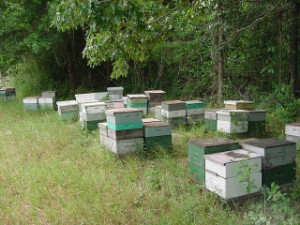I’ve had the opportunity to speak at, oh, probably a gazillion beekeeping meetings over the last 40 years, from small local gatherings to an audience of over 3000 at Apimondia 1999. I had a long absence from meetings for ten years after I began directing my university’s Centre for Dialogue, but with the release of my 2014 book “Bee Time: Lessons From the Hive” I returned to the speaking circuit.
That ten-year gap spanned a tumultuous era in beekeeping, and when I returned to lecturing I discovered that the beekeeping community today is quite different from what it was a decade ago.
A combination of decreased forage, increased pesticide use and rampant disease and pest problems now kills between 30 and 45 per cent of North American colonies annually, compared to the five or ten per cent when I left. That, of course, is a quite different world for bees, but it has also stimulated some dramatic shifts in who comes to meetings and how they keep bees since the advent of the bee apocalypse.
Attendance and makeup of audiences has changed significantly over the last ten years. A typical local meeting back then might have ten crotchety men over the age of 70, and a state or provincial meeting perhaps fifty or so of the same. Now, the audiences I speak to are in the hundreds, sometimes even for a local meeting, and there are many young people and women in the crowd.
Given the problems honeybee colonies experience today, that’s a remarkable increase in audience diversity and abundance. I attribute the increase to two factors. First, people care about bees, and have responded to the crisis by getting involved. And second, the new beekeepers also care about food, and growing local, a movement that seems to have spread into beekeeping along with hands-on gardening and urban farming.
Another observation that fascinates me is the number of beekeepers who no longer treat for Varroa. At all. This lack of chemical dependence is more prominent in the hobby and sideline crowd, but more and more commercial beekeepers with hundreds of colonies are telling me the same thing.
At first I doubted that beekeepers could actually keep their colonies alive without treatments, and they do lose colonies, occasionally large numbers. But the colony losses they report are in the 30 to 40 per cent range, no worse than beekeepers that treat heavily. Perhaps in the pre-collapse days, with low winter mortality, treatment was clearly preferable. But if you’re going to lose over one third of your colonies each year whether you treat or not, skipping treatments may make good sense, saving both labor and the costs of chemical treatments.
What’s missing in this discussion are data. We need more rigorous studies comparing treated and untreated colonies. Relying on anecdote is not a robust way to design colony management recommendations, but there seems to be enough stories out there to justify a large-scale research effort to examine the desirability of few or no treatments in today’s environment of high annual colony losses.
Another surprising impression I have from my travels is an increase in beekeepers who prefer top bar hives to the more standard Langstroth equipment. In New Mexico, for example, half of all colonies are kept in top bar hives.
Top bars would seem to have many disadvantages, particularly the need to destroy the comb to harvest honey, as the frames can’t be spun in extractors like the Langstroth frames. But what’s most interesting about top bar advocates is that they seem less focused on maximizing honey production and more focused on enjoying their bees.
And they do see some advantages in their system. Yes, colonies may have a tendency to swarm more often in top bars, but top bar beekeepers compensate by checking their hives often during swarming season, with a hands-on attitude focused more on observing and enjoying their bees than on producing copious quantities of honey.
They also rarely move their hives, which may be another advantage since moving colonies exposes bees to diseases and pests. And, top bar beekeepers focus on harvesting wax as well as honey; the high value of beeswax provides some economic counterweight to producing less honey.
I may be generalizing from too-few experiences, and perhaps beekeeping hasn’t changed as much as I’m imagining. But if it hasn’t, it should. It would be foolish to continue keeping bees the way we used to, because the old ways no longer work.
The message I take from my limited observations is this: if there is a movement, it’s one that is putting bee health first, emphasizing the enjoyment of beekeeping as much or more as maximizing colony productivity. And it’s a movement deeply rooted in an expanding food culture that favors local farming and reductions of synthetic pesticide and fertilizer use.
I believe that a radical reinvention in how we keep bees is necessary to reduce today’s tragic colony mortality. It’s been gratifying to hear as I travel that many younger people are getting involved, with new ideas, and that they are beginning to redefine what good beekeeping means.
——————————————–
Your comments are most welcome. I’d love to hear from you:
